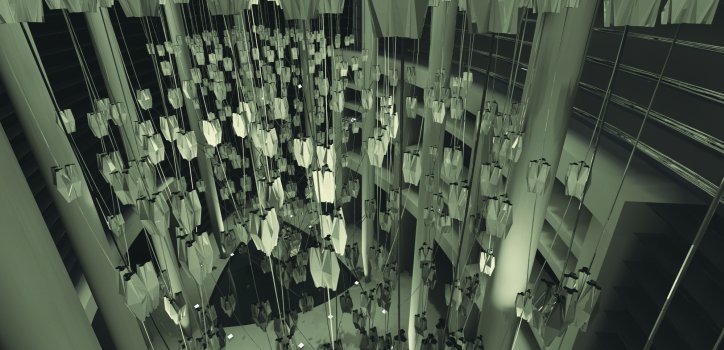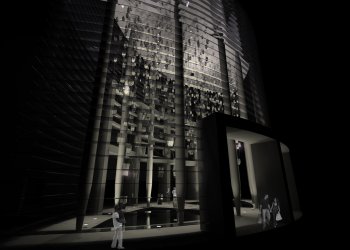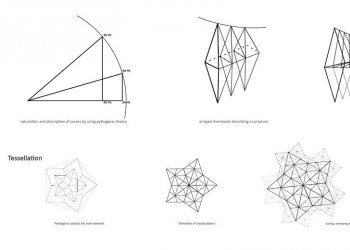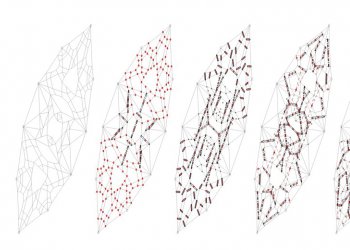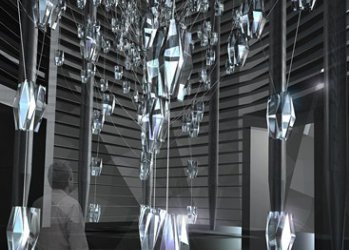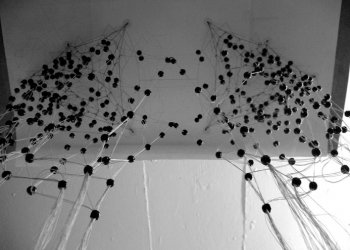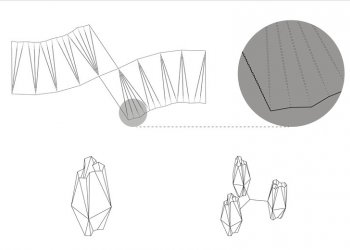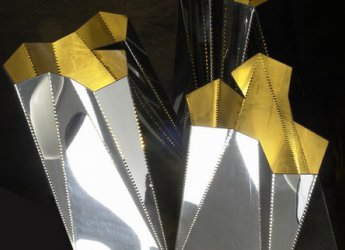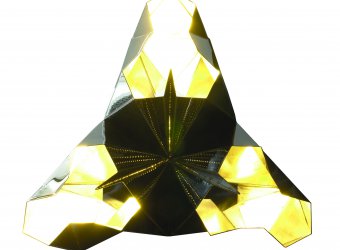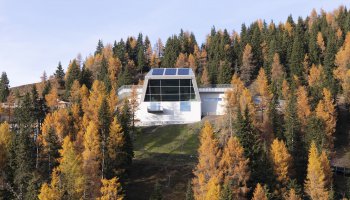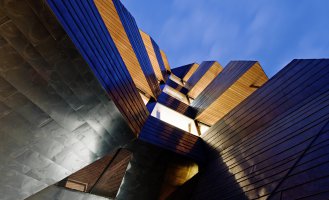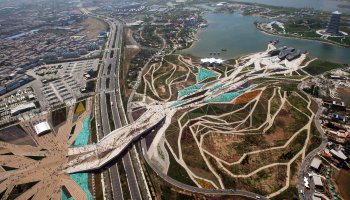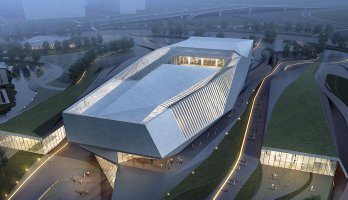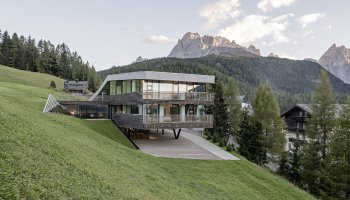Throughout history, man has used the stars as a reference to his location. The mystery of the stars–each a symbol of man’s dreams and potential–began to unfold as his tools progressed. Spatial mapping led to the discovery of new lands, kingdoms and empires, expanding knowledge throughout the world.
Celestial Fabric
TYPE Private Exhibition
STATUS Competition
LOCATION Dubai, United Arab Emirates
YEAR 2008
CLIENT SOM/EMAAR Properties
DESIGN TEAM Eva Castro, Maria Paez Gonzales, Ulla Hell, Holger Kehne
Today, the Burj Khalifa has achieved the seemingly unachievable, rising higher than any building in history. But while this technological feat has been realized, the stars above remain unchanged.
Celestial Fabric brings five heavenly bodies down from the skies. As the system ascends through the lobby, paths multiply to create a dense network of shimmering lights that seem to continue to the heavens.
Celestial Fabric is an interconnected spatial network consisting of mirror-polished stainless steel components suspended within a cable-net structure. The cables hang from a complex geometric net based on two-dimensional Islamic patterns, rendered three-dimensionally within the vertical space. The structure connects to the lobby at five points, while cable strands descend and connect, terminating at five points above each reflecting pool. This branching network allows for both spatial depth and maximum structural efficiency.
The components are derived from a series of pentagonal geometries - inspired by the symbolic importance of the number five in Islamic culture. Each element is based on a specific geometric rationale: multiple two-dimensional pentagons are combined into an extruded three-dimensional form.
Each lighting element contains an integrated light source, individually controllable - producing ephemeral patterns and atmospheric effects throughout the space.
